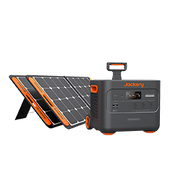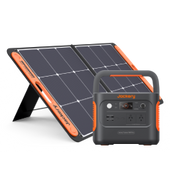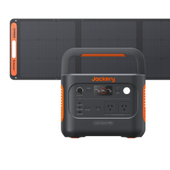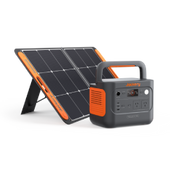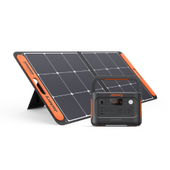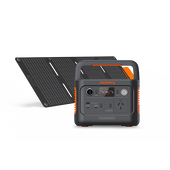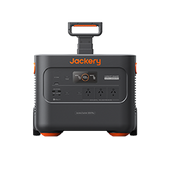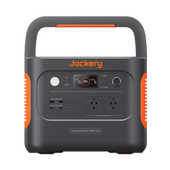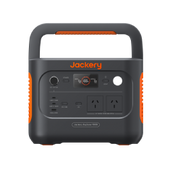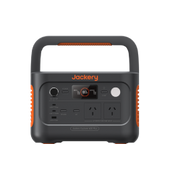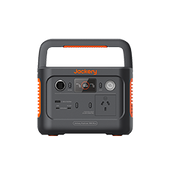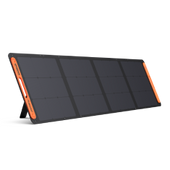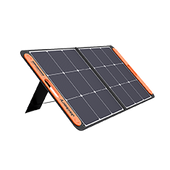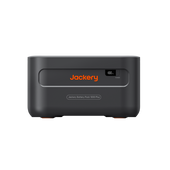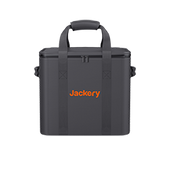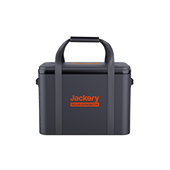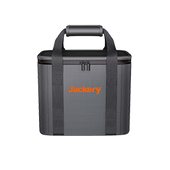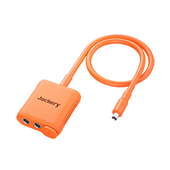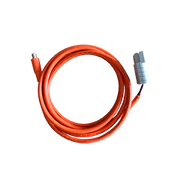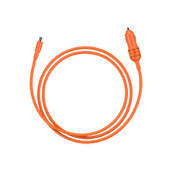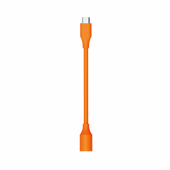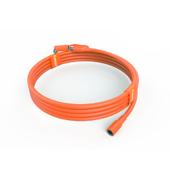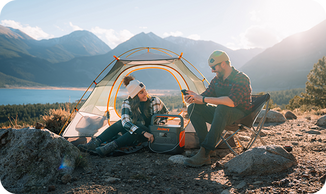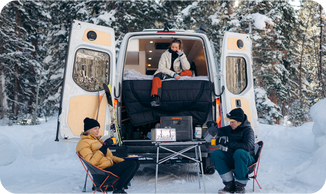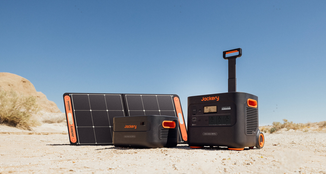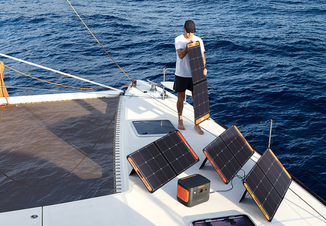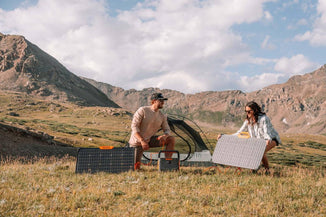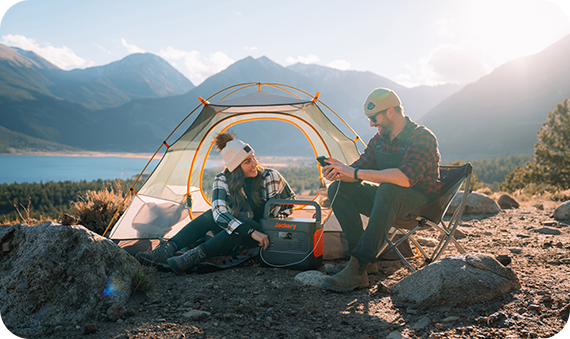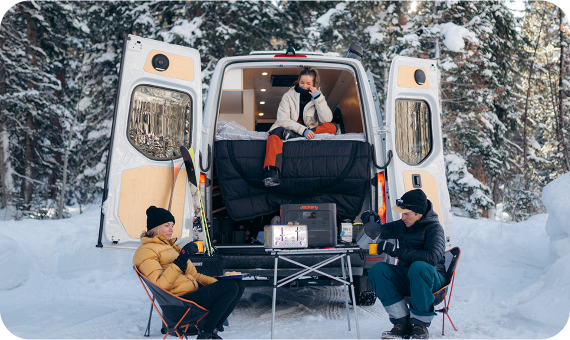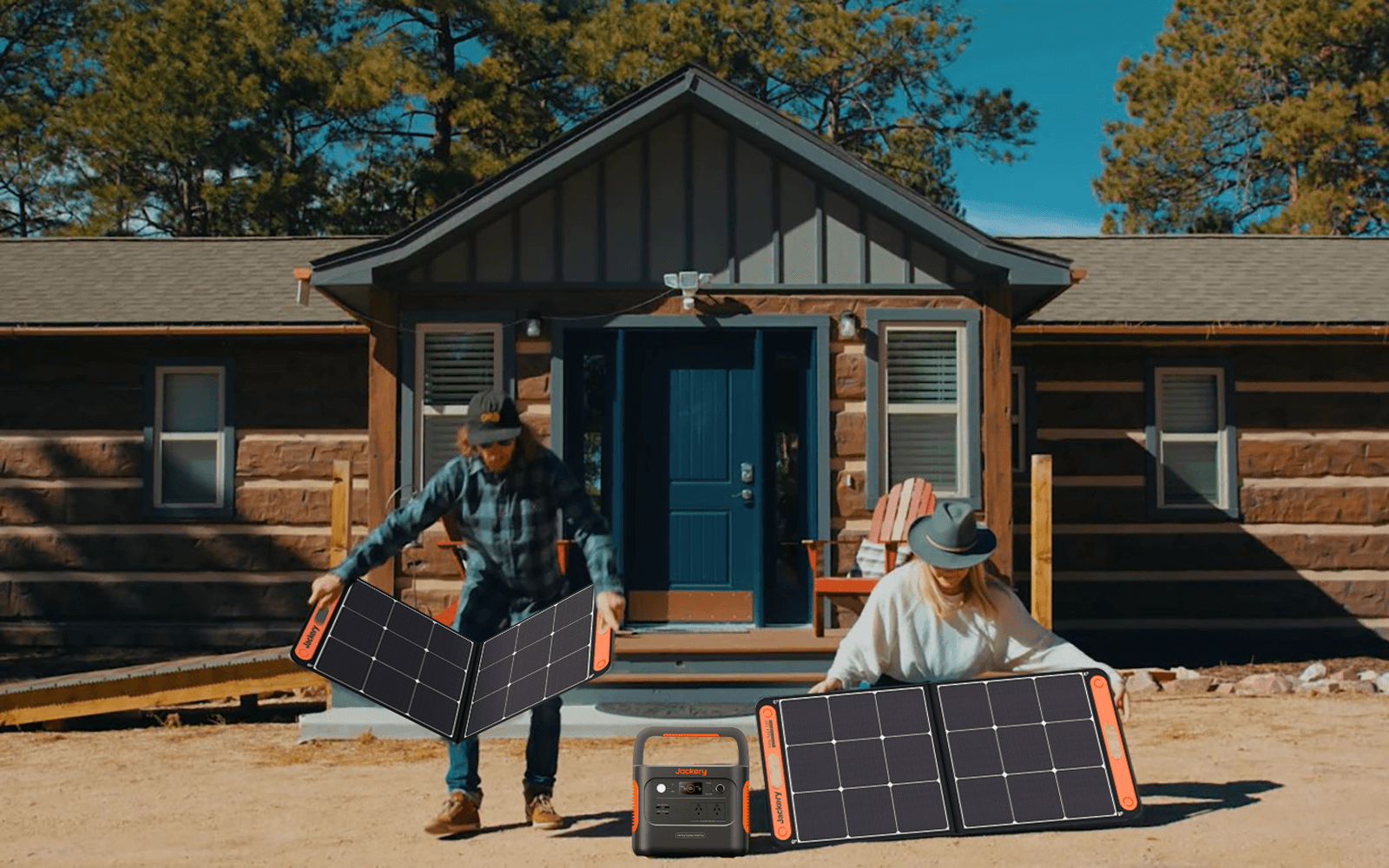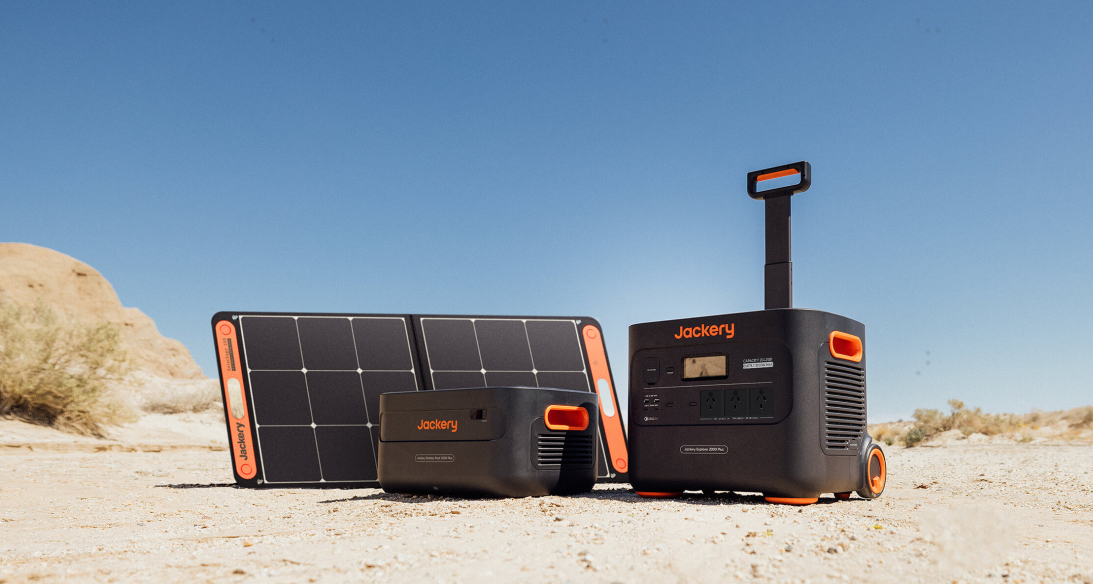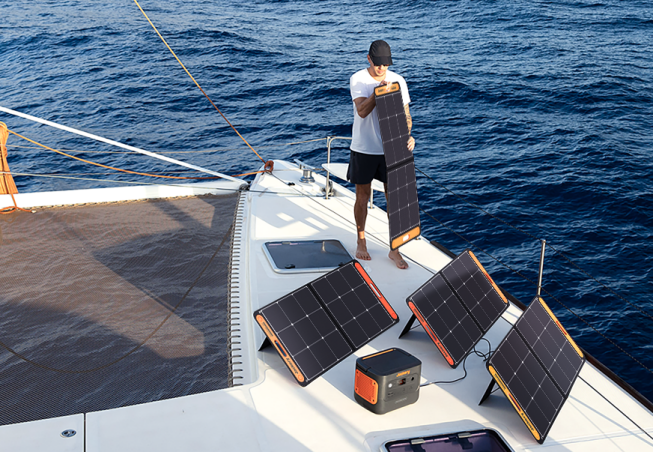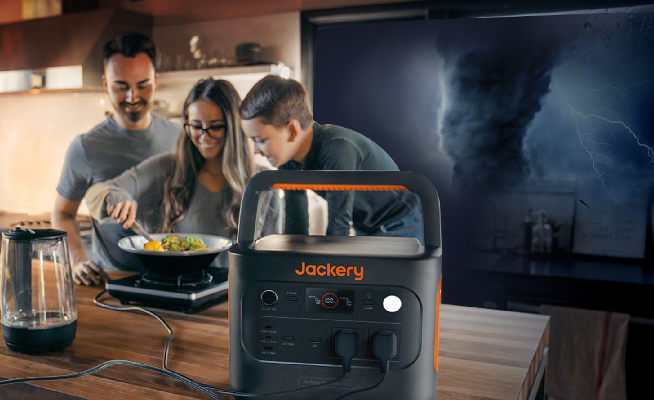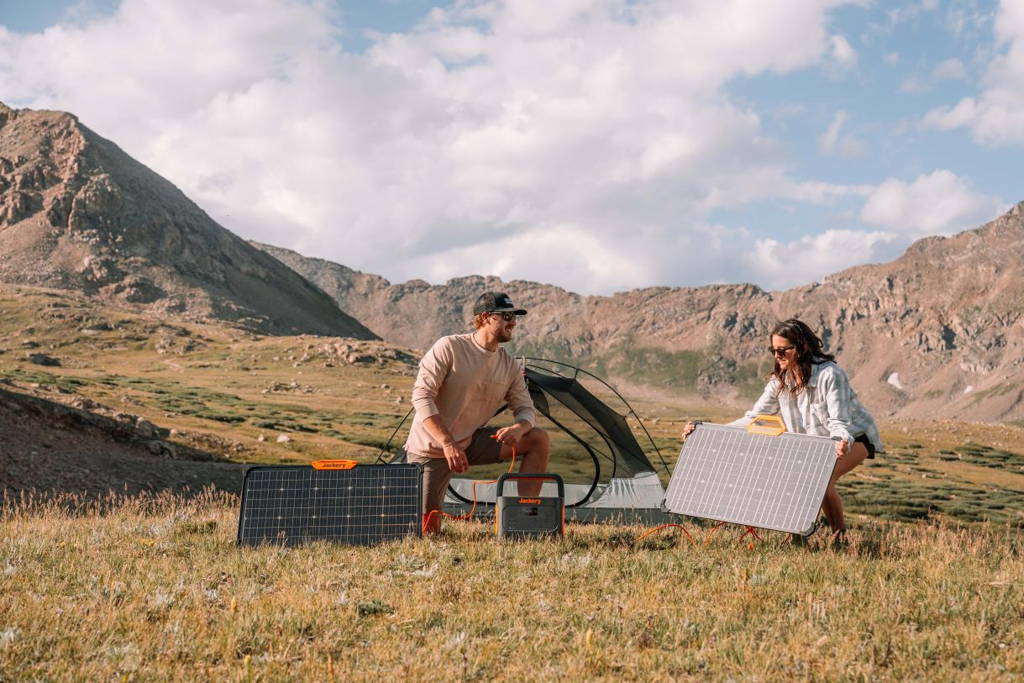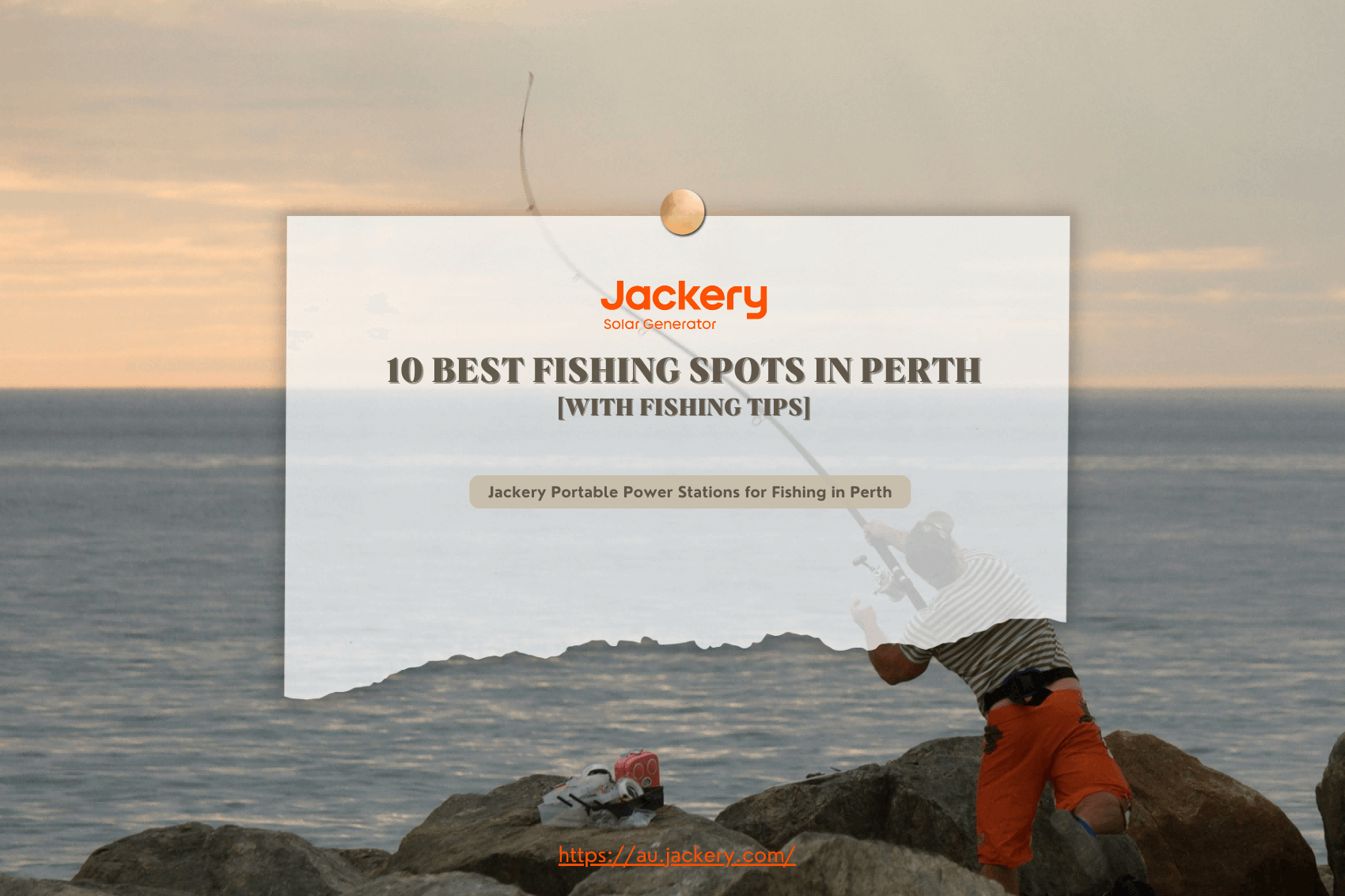|
Key Takeaways: |
|
• Winter can be a good fishing season, but you must plan carefully. • Two hours before high tide and one hour following high tide are the ideal times to go surf fishing. • Rainbow, brook and brown trouts will feed during the day, but the best time to catch them is at sunrise and the next 2 hours. • Weather is essential for the best fishing, especially wind and temperature. • For fishing in Australia, we recommend Jackery Explorer 300 Plus and 600 Plus to charge your essential electronics on the go, such as your phones, electric fish finders, etc. |
Why Fishing Time Matters?
Different fish species have different feeding patterns affected by weather, tides, and moon phases. If you fish at certain times, you'll have a much better chance of catching fish because you'll be fishing during their busiest feeding times. In other words, knowing when to fish based on these factors will help you catch more fish.
|
Why Fishing Time Matters |
|
|
Natural Fish Behaviour |
Fish are most busy at certain times of the day, like dawn and dusk, when looking for food. This makes these times great for fishing. |
|
Change of Temperature |
The water temperature can change throughout the day, affecting where fish swim and how busy they are. |
|
Light Conditions |
Fish behave differently depending on how much sunlight they are exposed to. Many species like low light times, like early morning or late evening, when they can feed more comfortably near the surface. |
|
Tidal Changes |
In coastal places, tides significantly affect how fish move, and many species feed most when the tide is coming in or going out. |
|
Moon Phases |
Some fishermen think the moon's stages, incredibly full and new moons, can change fish's behaviour, making them more active during feeding. |
The Best Seasons To Go Fishing
Any season is suitable for catching fish. Nevertheless, depending on the season you choose to fish, specific methods will undoubtedly work better than others. The following are the best fishing times for different seasons.

Go Fishing in Spring
Life stirs in response to the warmer temperatures that spring provides. In the spring, late afternoon to nightfall is usually the most fantastic time to fish. Fish Species: Flounder, Bonito, Flathead Tiger, Flathead Dusky, and Flathead Blue Spot.
Spring Fishing Techniques:
Spring is a fantastic time of year to lure fishing. To attract strikes from hungry fish, use a range of lures, including surface poppers, hard-bodied minnows, and soft plastics.
Bait fishing: In the spring, various species can be attracted using fresh baits such as prawns, worms, and pilchards.
Fly Fishing: In the spring, fly fishing is a fun activity in shallow estuary flats, where you can target whiting and bream with tiny shrimp and crab patterns.
Fishing in Summer
Mornings in the summer are great for fishing. Ensure you get an early start before sunrise since the waters can heat up fast as the sun approaches its peak. When darkness approaches and the sun sets, the fish will be primed to bite again. Fish Species: Flathead Blue Spot, Dusky, Flathead Tiger, and Bonito.
Summer Fishing Techniques:
For a more pleasurable fishing experience, use lighter lines and gear.
Observe tidal fluctuations to increase your chances of successful fishing.
Think about utilising live bait or lures that imitate the baitfish in the area.
Summer fishing can sometimes be unexpected, so exercise patience and persistence.
Fishing in Fall
Later in the day, the fish will be primed for a feeding frenzy. Similar to bears, fish require a specific number of calories to be consumed in advance to survive the following winter. Early afternoon is the ideal time to plan your autumn fishing excursion. Fish Species: Gummy Shark, Flathead Tiger, Flathead Dusky, Blue Marlin, and Flathead Blue Spot
Fall Fishing Techniques:
Using bait and lures that appeal to migratory fish is crucial when fishing in the fall.
To draw in fish, using live bait like prawns, squid, or pilchards can work wonders.
During this season, another common strategy is to cast and retrieve using soft plastic lures.
Fish in low light, such as early morning or late afternoon, is also advised for increased success rates.
Fishing in Winter
Wintertime brings a slowdown in freshwater fish activity due to low temperatures and food scarcity. Fishing will be much more productive at lunchtime and early afternoon when the sun has had time to warm the waters. Fish Species: Gemfish, Gummy Shark, Hapuka, Mako Shark, Pink Snapper, Flathead Blue Spot, Flathead Dusky, Flathead Tiger, and Blue Eye Trevalla.
Winter Fishing Techniques:
The distinct conditions of winter fishing necessitate a different strategy and method.
Winter fishing demands a lot of patience. Since fish are frequently slower moving and less energetic, fishermen must be persistent.
Fish have smaller appetites in the winter, so using smaller baits and lures can be more successful.
It is advised to retrieve bait or lures slowly and steadily to replicate the passive movement of fish in cooler water.
Fish prefer to come closer to the bottom, where the water is slightly warmer. Thus, depth is essential when fishing in the winter.
The trout season varies throughout Australia due to the country's varied topography and temperature. Since the water temperatures are most conducive to trout activity during the colder months, late fall to early spring is often the most significant time to catch trout in Australia.
Victoria: April to November
NSW: October to June
Tasmania: July to May
South Australia: Excellent fishing is available year-round, but from May to September
WA: April to September
Queensland: Because of its subtropical environment, there is no set season. However, in the cooler months, there is greater activity from trout.
The Best Times Of Day To Go Fishing
You should usually go fishing early in the morning (around sunrise) or late at night (around sunset). The changing light levels make fish more active and hungry during these times—most fish also like cooler water and softer light instead of the bright midday sun.

Moving with the Tides
The tides are among the most important factors to consider when planning a fishing trip. This is because flowing water tends to agitate a lot of nutrients, dramatically increasing baitfish activity. It's feasting time if you're a fish.
Contrary to common opinion, fish are most active while the tides are changing, not when they are at their highest or lowest point. Understanding tide charts will help here. Generally speaking, the fish are more active when there is a more remarkable tidal change.
The question is how you can predict when this will occur. We'll give you a hint: the pumpkin in the sky has something to do with it.
The moon conducts most of the leg work when it comes to causing tides; the sun and moon's gravitational pull also play a part. For this reason, the new and full moons correspond with the most significant tidal shifts. Thus, the moon phase calendar answers the issue of when to expect the highest tides.
Best Time of Day for Catching Different Fish Species
The following are the fish species and their best fishing times of the day.
Panfish: Sunfish, Perch, Bluegills, and Crappies are sight feeders. Anything they attack at moves and fits in their mouths will get serious over the summer and seek out the more profound, colder water. Thus, the ideal time to go panfish fishing is when the water starts to cool off between 4 and 7 pm. Panfish will be better able to observe surface food in the late afternoon when trees, buildings, and other vegetation throw their shadows over the water.
Bass: Successful bass fishing begins at daybreak and lasts 3 - 4 hours. Smallmouth, striped, and largemouth bass will eat baitfish early in the morning when it's still dark outside. The bass are drawn to the baitfish's early onset of activity and bite.
They will roll more slowly when the sun is at its highest and the day is hot. When dusk falls, they will be searching for food once more. That being said, nighttime is usually the best time of day to go bass fishing. A full moon will enhance a heavy bite night. See our article Bass Fishing Basics for a breakdown of seasonal bass fishing advice.
Catfish: Channel, flathead, and blue catfish are known to feed heavily at night, but there are better times to fish. Catfish will feed and stay active throughout the day; they eat when hungry, not at any particular time.
Night fishing is an excellent option to avoid the summer heat. For catfish, conditions matter more than the time of day; the higher the water level, the better. You can mix things up by fishing for catfish at dusk, from 7 to 9 pm, or in the early morning light. Try fishing at midnight to fish peacefully and beat the summer heat.
Trout: Brown, brook, and rainbow trout all eat throughout the day, but the best times to catch them are in the first two hours after daybreak. The second choice is from two hours before twilight till dusk. Trout see well in low light and have good depth perception.
Trout are best caught early in the morning since they will become slower in the summer due to warmer water temperatures. On the other hand, trout will eat at night when there is a full moon since the temperature is lower, there is still light, and fewer people are using the waters (swimmers, boaters, etc.).
Salmon: Seasonal differences exist for king, Atlantic, chinook, coho, and pink salmon. Early afternoon and early evening are the ideal times to go in the spring. The salmon will assemble and feed on surface organisms as the water warms. Late afternoon and early evening are suitable for summer—the salmon rise to the top as the water cools.
Fish for salmon in the afternoon during the fall. The water becomes enough warmed by the sun to make it pleasant for them to feed. They also feed a lot in the fall to gain weight before the winter.
More Factors Affect the Best Fishing Time
It is essential to consider several aspects of the best fishing time, such as weather, moon cycles, and light levels, in addition to the optimal time and seasons for fishing. Anglers who embrace these broader viewpoints enhance their relationship with nature and the aquatic ecosystems they value, increasing their chances of landing a monster fish.

Weather
The weather has many effects on saltwater fishing. The wind is a significant aspect since it may churn up and muddy some areas, bring bait up onto a coastline and provide a lot of water noise for ambient noise, which helps you stay covert. Another aspect is cloud cover, which will be discussed in more detail in the section on light levels.
Since the weather will alter the locations and depths where fish feel most at ease, it is also necessary to consider this when determining water temperature. Changes in barometric pressure can also impact fronts as they go through; for many species, feeding rises just before a cold front but decreases during and following a storm or front. After a front passes through, fishing might occasionally be wrong and stay that way for a day or two.
Tides and Currents
Tides and currents greatly influence the performance of saltwater fisheries. They impact the water level; during low tide, a shallow location that is home to fish during high tide may become a barren bank of muck. On the other hand, during low tide, great fishing may be found in areas where the bottom has depressions or a passage that stays deeper than the surrounding waters.
It's often better to fish during shifting tides and flowing currents, whereas static or "dead" tides, when there's little movement in the water, make for sluggish going. Because tides and currents are predictable, check a tide chart before you leave the dock to see what time of day is ideal for fishing.
Moon Cycles
The moon affects freshwater and saltwater ecosystems, which influences the quality of fishing at any given moment, particularly in areas where tidal oceans are present. Solunar theory and the reasons the moon affects the ideal times to fish have been extensively documented, but we'll summarise the essential information to spare you many hours of reading.
Along with a full moon, fishing has traditionally been preferred during a new moon when no tiny moon is visible. According to research and records, fish activity and catches are perfect during the days preceding the new or full moon, making this lunar cycle phase one of the finest times to fish.
Anglers targeting large bass, carp, sharks, and catfish are among the many who value these peak hours greatly. An hour or two for each side of the moon to set and rise, like sunset and dawn, are also solid bets for many species.
Light Levels
As we've already discussed, one of the main reasons fishing is excellent during the daytime is the variation in light. Many fishermen think that prey finds detecting and avoiding predators more difficult when the weather changes. But there are other factors at work besides the sun's location. Rainfall and heavy or sporadic cloud cover both have an impact.
Fish frequently eat heavily in low light, and the amount of light also affects the colour of lures that work best at any particular moment. Though there's no foolproof method to gauge how the fish will react to your colour selection, keep in mind this general guideline: observe the water and match the colour and finish of your lure to the colour of the water.
Green lures are frequently successful when the water's condition and the sun's rays give it a green appearance. However, root beer colours are often better when they make the water appear brown. Additionally, shiny lures perform better in high light, whereas matte-finish lures perform better in low light.
Must-Have Fishing Gear
Going fishing is a fun way to spend time outside with family, friends, or even yourself and breathe fresh air. However, it's not fun if you don't catch any fish. You can improve your skills and understanding, but your gear is still necessary. Inferior gear is the fastest way to ruin a fishing day.

A. Fishing License
It is implicit, but nearly every state mandates a state-issued fishing license unless you are under 16. Obtain one and allocate a few minutes to examine the regulations for the fishing location. Knowing size and bag restrictions, proper fishing techniques, and unique rules for particular species is advantageous.
B. Fishing Rods & Reels
Concerning fishing equipment, one can transition from moderate to extreme, akin to many other hobbies. Each fishing technique utilises rods and reels; nonetheless, the essential advice for novice anglers is to maintain simplicity. Seek a rod and reel combination suitable for both bait and lure fishing.
C. Fishing Lines
Fishing line is currently offered in various materials and dimensions. Larger diameter lines from the same material are more robust than smaller ones. Braided lines are generally solid and slender. Fluorocarbon lines exhibit abrasion resistance and are practically imperceptible underwater, while monofilament lines are buoyant and elastic.
D. Lures & Bites
The majority of us initiated our enthusiasm for fishing using live bait. The Nightcrawler is the most efficient and adaptable live bait available. Attach a small circular hook (size 8 or 10) to your line and incorporate a few split shots 12 to 18 inches above the hook to target panfish such as bluegills and perch.
E. Portable Power Supply
Don't ignore the importance of a portable power supply when fishing outdoors.
Timing is crucial when fishing, and understanding the ideal times to fish can mean the difference between a slow day and a successful catch. Arm yourself with Jackery Solar Panels and Jackery Portable Power Stations to ensure your equipment, such as lights and fish finders, is always available when the fish bite.
You may fish at sunrise, sunset, or even late at night without worrying about running out of power, thanks to Jackery's clean, portable energy. With Jackery by your side, you can get the most out of every fishing trip.
Go with the Jackery Explorer 600 Plus Portable electricity Station for uninterrupted electricity during blackouts. Its UPS feature guarantees a changeover time of less than 20 ms, offering dependable backup for necessary devices such as your phone, tablet, camera, fish finder, etc. Its 800W power and 632Wh capacity make it suitable for fishing trips.
With quick charging capabilities, such as a one-hour Emergency Super Charging Mode, the Explorer 600 Plus is a lifesaver in emergencies. With 4000 cycles, the LFP battery guarantees steady performance for more than 10 years of operation.
With its silent operation mode (≤22dB), you will never worry about disturbing the fish. Also, the Explorer 600 Plus was designed with safety in mind and is a reliable and secure option for any situation with the shockproof and fireproof construction.

|
Fishing Electronics |
Explorer 600 Plus Working Hours |
|
Electric Fish Finder (100W) |
5.1H |
|
Portable Cooler (200W) |
2.5H |
|
GPS Device (60W) |
8.4H |
|
Phone (10W) |
50.6H |
|
Camera (150W) |
3.4H |
The Jackery Explorer 300 Plus Portable Power Station redefines portability and performance. Weighing just 3.75kg, this ultra-lightweight power station is designed for maximum convenience, allowing you to carry it in your backpack for fishing trips easily. Its compact size doesn't compromise its power, offering a 288Wh capacity and 300W output to keep your essential devices running smoothly.
Equipped with cutting-edge features, the 300 Plus ensures versatility for various scenarios. Its dual USB-C ports with up to 100W output support fast and simultaneous charging, making it ideal for electric fish finders, tablets, and smartphones.
With four charging options—solar, AC wall outlet, car port, and USB-C—you'll always have a way to recharge, whether at home, on the road, or in the wilderness. Plus, it's whisper-quiet and completely emission-free, ensuring it is both eco-friendly and convenient.
The Explorer 300 Plus is built to last, featuring an LFP battery with an impressive 10-year lifespan and over 3,000 cycles to 80% capacity. Safety is at the core of its design, with advanced ChargeShield Technology offering 52 layers of protection against overvoltage, short circuits, and more. Whether camping, travelling or preparing for emergencies, this portable power station provides reliable and safe energy solutions that adapt to your lifestyle.

|
Fishing Electronics |
Explorer 300 Plus Working Hours |
|
Electric Fish Finder (100W) |
2.4H |
|
Portable Cooler (200W) |
1.2H |
|
GPS Device (60W) |
4H |
|
Phone (10W) |
24H |
|
Camera (150W) |
1.6H |
Best Fishing Time FAQs
The following are the frequently asked questions about the best fishing time.
1. What determines the best fishing times?
The moon's gravitational pull influences tidal movement, and anglers can predict when the fish will bite by watching sunrise and sunset times. Many anglers believe that fish are most active during complete or new moon phases and that activity is at its lowest during the quarter or three-quarter moon phases.
2. At what temperature are bass most active?
Fish are often more sluggish in colder water, which can also occur if the temperature is too high. The ideal temperature range for bass fishing is between 70 and 85 degrees Fahrenheit. This temperature is perfect for bass to be most active since it prevents the fish from suspending themselves to escape the heat.
3. What time of day is best for saltwater fishing?
More specifically, if the tides and weather cooperate, dawn or dusk are usually the ideal times to go saltwater fishing. Don't forget to consult a saltwater tide chart to determine the optimal time of day for fishing tides.
Final Thoughts
Finding the best fishing time may require you to consider many variables, but as you gain expertise, it will all make more sense. Imagine it like a puzzle with a few missing parts. You can fill in those gaps and schedule your fishing excursions for best success as you learn more about your quarry, like where they dwell, what they eat, what water temperature they enjoy, and their general preferences.
You can accurately forecast peak fishing days and hours well in advance with further practice. Now that you know the optimal time to fish for your location and target species, you can plan to get bait and get out on the lake at that precise moment.

